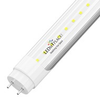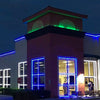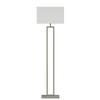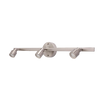As a factory owner or manager, lighting is an important aspect of your workplace that should not be taken lightly. The type of lighting you choose can have a significant impact on the safety, productivity, and energy efficiency of your facility. High bay LED lights are a popular choice for factory lighting because they offer numerous benefits over traditional lighting sources. In this article, we will provide you with some useful tips for choosing and optimizing high bay LED lights in your factory.
Introduction
Factory lighting is crucial for maintaining a safe and productive work environment. Traditional lighting sources, such as fluorescent and metal halide lights, are being replaced by LED lights for their energy efficiency, long lifespan, and superior light quality. High bay LED lights are a popular choice for factories due to their high output and ability to illuminate large areas. However, choosing the right high bay LED lights and optimizing their placement and maintenance is crucial for achieving maximum benefits.
Why High Bay LED Lights are a Great Choice for Factories
High bay LED lights are ideal for illuminating large, high-ceiling spaces like factories and warehouses. Compared to traditional lighting sources, they offer several benefits:
- Energy efficiency: LED lights consume significantly less energy than fluorescent or metal halide lights, resulting in lower electricity bills and reduced carbon footprint.
- Long lifespan: LED lights last much longer than traditional lighting sources, reducing the need for frequent bulb replacements.
- Better light quality: LED lights provide bright, uniform illumination that enhances visibility and reduces eye strain.
- Durability: LED lights are sturdy and can withstand the vibrations and shocks commonly encountered in industrial settings.
- Customizable: High bay LED lights come in a variety of color temperatures and beam angles to suit different factory lighting needs.
Choosing the Right High Bay LED Lights
When choosing high bay LED lights for your factory, it is important to consider the following factors:
Light Output
The light output of high bay LED lights is measured in lumens. For factories with high ceilings or large spaces, lights with high lumen output are recommended to achieve sufficient illumination. However, too much brightness can cause glare and eye strain, so it is important to strike a balance.
Color Temperature
The color temperature of LED lights is measured in Kelvin and refers to the warmth or coolness of the light. For factories, a color temperature of 5000K-6500K is recommended as it provides bright, natural-looking light that enhances visibility.
Beam Angle
The beam angle of LED lights determines the spread of light. For factories with high ceilings, narrow beam angles are recommended to direct light downwards and reduce wastage. However, wider beam angles may be suitable for areas with lower ceilings or for creating a more diffuse light.
Dimming Options
High bay LED lights with dimming capabilities allow for greater control over lighting levels, reducing energy consumption and providing flexibility for different tasks.
Energy Efficiency
LED lights are inherently more energy-efficient than traditional lighting sources, but some high bay LED lights are more efficient than others. Look for lights with high lumens per watt (LPW) rating, which indicates the amount of light produced per unit of energy consumed.
Proper Placement of High Bay LED Lights
Proper placement of high bay LED lights is crucial for achieving optimal lighting conditions in your factory. Here are some tips:
- Place lights strategically to minimize shadows and dark spots, ensuring uniform illumination throughout the workspace.
- Consider the ceiling height, layout of the factory, and the type of work being performed when deciding on the placement of lights.
- Use reflectors or lenses to redirect light where it is needed and prevent glare.
Maintenance of High Bay LED Lights
Proper maintenance is important for maximizing the lifespan and performance of high bay LED lights. Here are some tips for maintaining your factory lighting:
- Clean the lights regularly to prevent dirt, dust, and debris from accumulating on the surface.
- Inspect the lights for damage, cracks, or other signs of wear and tear, and replace any damaged components promptly.
- Test the lights periodically to ensure they are functioning correctly and efficiently.
- Consider upgrading to smart lighting systems that allow for remote monitoring and control, making maintenance easier and more efficient.
Conclusion
Choosing and optimizing high bay LED lights for your factory can have a significant impact on your bottom line, employee productivity, and workplace safety. By considering factors such as light output, color temperature, beam angle, dimming options, and energy efficiency, you can select the right lighting solution for your factory. Proper placement and maintenance of high bay LED lights are also crucial for achieving optimal lighting conditions and maximizing the lifespan of your lighting system.
FAQs
-
How much energy can be saved by using high bay LED lights?
- High bay LED lights can save up to 70% of energy compared to traditional lighting sources.
-
Are high bay LED lights more expensive than traditional lighting sources?
- Initially, high bay LED lights may be more expensive than traditional lighting sources, but they offer long-term cost savings due to their energy efficiency and longer lifespan.
-
How long do high bay LED lights last?
- High bay LED lights can last up to 50,000 hours, which is significantly longer than traditional lighting sources.
-
Can high bay LED lights be dimmed?
- Yes, high bay LED lights with dimming capabilities are available, providing greater control over lighting levels and energy consumption.






















































































